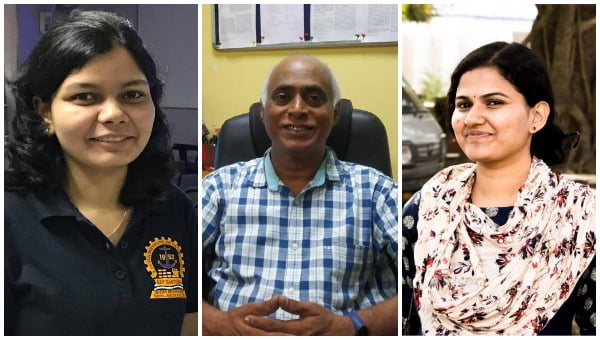Odisha-Born Scientist & IIT Researchers Develop New Early Cyclone Warning Model

Bhubaneswar: Three researchers from IIT-Kharagpur have developed a model that can predict the initiation of a cyclone over the Bay of Bengal (BoB) basin at least four days before the weather satellites can pick up warnings from the ocean surface.
The team, comprising Prasad K Bhaskaran, Jiya Albert and Odisha-born Bishnupriya Sahoo, has been able to do so by identifying pre-cyclonic eddies in the upper atmosphere before a depression is formed over the sea.
Odisha Bytes spoke to Bishnupriya, a native of Bhubaneswar, about this new technique, which the researchers claimed to be the first-of-its-kind for the BoB basin and can give additional lead time to governments in preparing for an impending cyclone.
“There have been trials in the past but most reports were inconclusive with ‘complex’ written at the endnote. BoB remained a challenge for researchers as unlike Pacific and Atlantic basins, it is land-bound and has different climatic conditions. The basin witnesses several atmospheric changes because of the landmass, which makes it difficult to pick accurate data,” she said.
Elaborating further, Bishnupriya said they used Okubo-Weiss Parameter, a proven robust eddy detection technique.
“Pre-cyclonic eddies of Phailin were found most precisely through numerical weather predictions. We could pick the disturbances in the atmospheric column on September 30, 2013, much before the extremely severe cyclonic storm struck Odisha coast on October 12 later that year near Gopalpur on Odisha coast,” she said.
Similar disturbances were spotted over the same region the following year when Andhra Pradesh and Odisha were battered by cyclone Hudhud, she added.
Bishnupriya further said initiation disturbances that occur at upper atmospheric levels can be detected at a higher lead time in the case of pre-monsoon cyclones.
“The India Meteorological Department usually sends cyclone warnings about a week before the landfall,” she said.

The team began the research in 2018 after DST Centre of Excellence in Climate Studies was set up at IIT-Kharagpur and found evidence of pre-cyclonic eddies in the atmosphere in 2019. The researchers followed it up with a rigorous study, which was later tested and verified with six cyclones, comprising four post-monsoon severe cyclones – Phailin (2013), Vardha (2013), Gaja (2018), Madi (2013) – and two pre-monsoon cyclones Mora (2017) and Aila (2009) that had developed over the BoB basin.
“It went through a lot of reviews and was published recently,” she said.
The study conducted under the Climate Change Programme with support from the Centre’s Department of Science and Technology (DST), was published in the journal Atmospheric Research on May 8, 2021.
Bishnupriya, who has a masters degree in Mathematics from NIT, Rourkela, said this model gives a larger time gap between detection of a cyclone and its landfall. “We cannot stop the cyclones but this model will help in evacuation activities and save more lives,” she added.
She is currently working as a Research Scientist at the Yantai Institute of Coastal Zone Research, China.

Comments are closed.